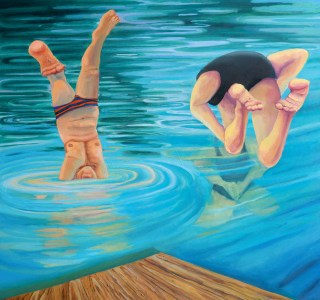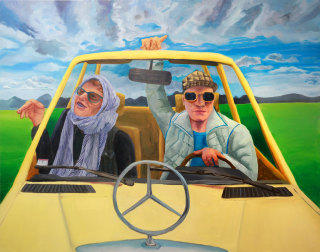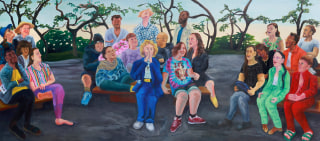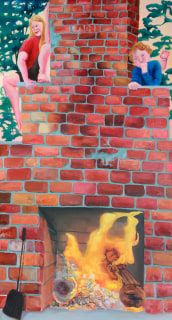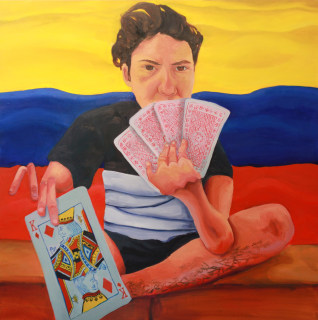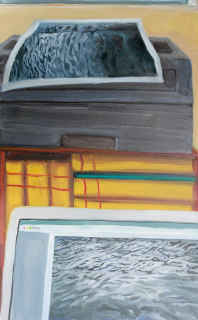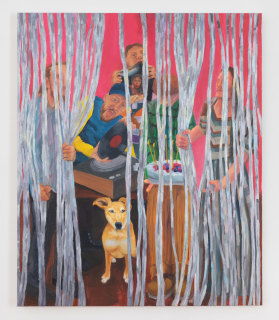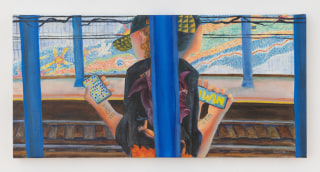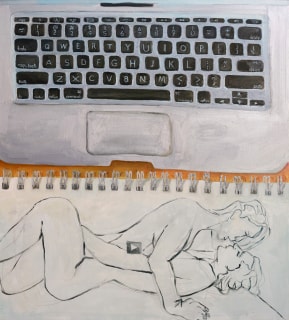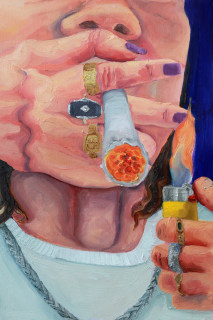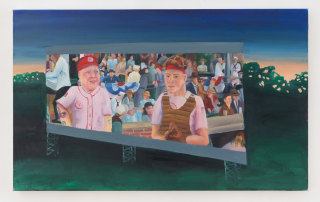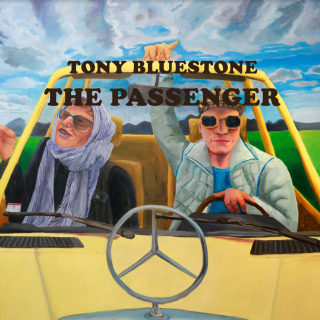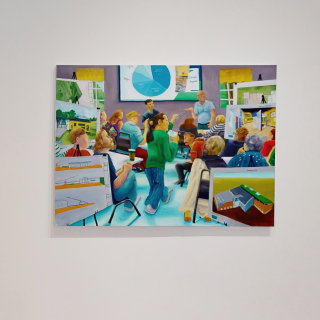
Freight+Volume is pleased to present The Passenger, a new body of work by Tony Bluestone. Just as the title suggests, The Passenger invites the viewer along for a ride through the world as Tony wishes it might be. These paintings—figurative in the sense that they are overflowing with figures—are abstracted and refracted through Tony’s deft and comedic strokes of color, until they become potently more than life.
“Isn’t it funny how things happen? All the shapes we make,” The Girl (played by Maria Schneider) says to David Locke (Jack Nicholson) in Antonioni’s The Passenger (1975). Tony borrowed the title for this show from, among other things, that film. And echoing The Girl, standing amongst these paintings, we marvel at how things happen and all the shapes we make.
So many! Tony could render the world exactly as it is, frame the social agreements of how things happen—how a body sits, a cloud billows. (Ask to see Tony’s sketchbook, the early drawings for these paintings are uncannily lifelike, as though charcoal rubbings of a moment.) But what’s the point in portraying a world people already believe in? Instead, Tony applies this virtuosity to looking at the shadows and highlights that, through their relation to one another, create an instant. Tony is working hard in these paintings, making sure we don’t forget that through our relationships we can re-make the world. These luminous reinterpretations of daily life are vibrating reminders of a specifically queer effort to resist the received structures of the ‘real’ world, proposing a shift in perspective every step of the way. Make-believe till you make it believed.
Tony’s whimsical manipulation of pigment and line (a blob a torso, an arm more color than strength) is not a shrug of indifference to form but, instead, the exact opposite, a spotlight on the emotional and structural qualities that turn the vibration of shapes and colors into a person's experience of themself and the world. In Little Deaths, Tony reanimates the experience of a person diving, of their friend diving in first, of Tony recalling the memory, so that the vantage point of the painting gets constructed out of this collaborative experience. There is a synthesia at work; watching the painting feels like, no, is the dive—the curled toe, the fear when you start to jump, the ecstasy in the plunge, imagining someone watching you and someone watching them, the momentary oblivion of immersion. The diver in the painting is about to splash into their reflection (which in a comedic twist, has much better form), their relationship to their reflection is the catalyst for the disturbance to an otherwise calm surface, a literal and metaphoric ripple effect.
Until we enter the gallery, Tony’s community is the star of the show. Painted from memory, their expressions are amalgamations. The typically salient social cues of everyday interactions become skewed as the laugh of one day merges with the upset outcry of another. Like all of the other paintings in the show, Set and Setting is painted from first-person perspective. And like the other paintings in the show, the perspective is not Tony’s alone. Members of Tony’s community are gathered within the shared frame of an outdoor theater, playing a mutual-game of make believe, and we are called in to do the same. Standing in front of Set and Setting, presumably on center stage, we return the audience’s gaze, a mutual looking between two subjects. It is a fun-house mirror of witnessing and being witnessed that is ever exponential. And it repeats throughout the show as the role of the viewer shifts from work to work; the filmographer in The Passenger, the friend about to lose in The Gambler, blocking the wind in Ritual, googling “lesbian sex” in I Just Googled “Lesbian Sex”. The viewer is the final—and necessary—participant in Tony’s paintings, their role to complete another cycle of relationships as they stand before the paintings and watch them progress.
Tony doesn’t need to paint real life because Tony is really in life, making these paintings colloquial and skewed, mystical and quotidian, nudging us towards a complex shared experience. There seems to be a sort of entropy in looking at Tony’s paintings; the more you stand there, the more that colors vibrate into something else, the more that depth appears, and the more that line transforms. Watching the paintings as a whole and individually, a further extrapolation of the theme suggests itself: a proposal for how we might rearrange ourselves into a better whole.
- Lydia Okrent

